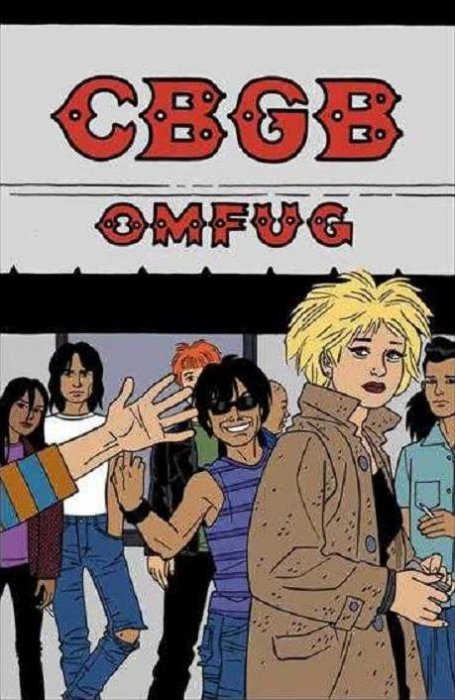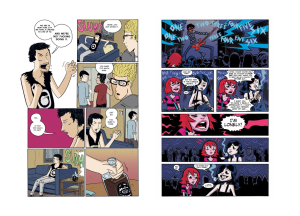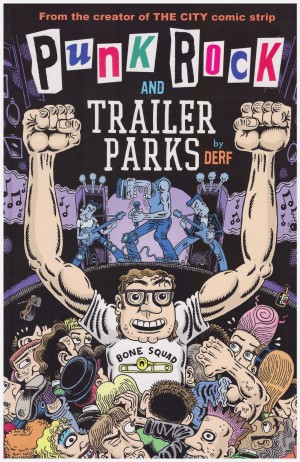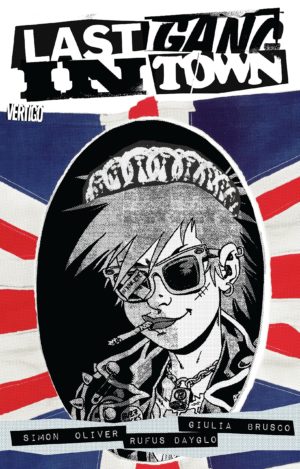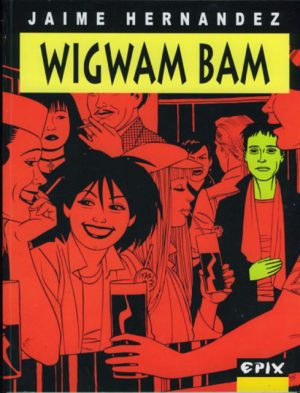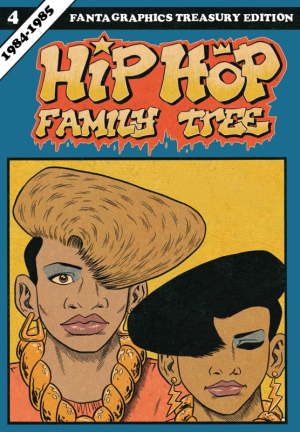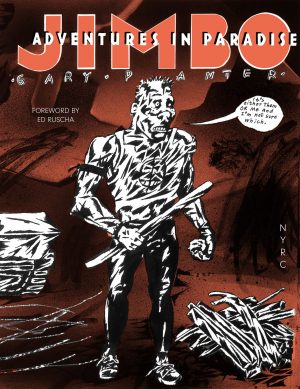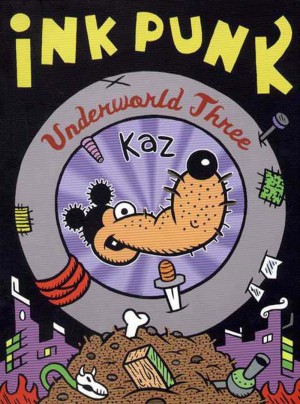Review by Graham Johnstone
“It’s only fitting that the cartoon world of CBGB should find itself inside a comic book,” says Lenny Kaye in his introduction, and who knows better than he? An underground music performer and champion, Kaye, was a long-term denizen of the legendary New York music club, and he reveals here, a long-term lover of comics.
Launched in 1973 in Manhattan’s edgy Bowery district, CBGB stood for ‘Country, Bluegrass, and Blues’. However, the club became more famous for nurturing underground music, starting with punk and new wave, including Blondie, Ramones, and Talking Heads. All of which was justified by the club’s cumbersome suffix OMFUG (Other Music For Uplifting Gourmandizers). The now legendary club, and its proprietor Hilly Kristal, were immortalised in a 2013 movie.
Editor Ian Brill sought out writers with something to say about ‘the home of underground music’. Too young to have been there for the first flush of the funky toilets, they find sharp angles. An embryo in 1973, Ana Matronic’s ‘Rock Block’ makes a grand entrance with “FORD TO CITY: DROP DEAD”. The headline slamming Presidential refusal to bail out the near bankrupt NYC perfectly encapsulates the economic circumstances and fighting spirit that fueled CBGB. A youth press-ganged to clear his late uncle’s apartment finds said uncle had a memorable moment at CBGB as ‘Helsinki Syndrome’. A student sharing his band’s demo, triggers CBGB memories for his teacher, Professor Stratocaster. Screenwriter/Director Kim Krizan conjures an alternative origin of the club in America’s tribal past. R. Eric Leib flips punk refrain ‘No Future’, with a time-traveller in search of a lost precious moment. Across these disparate approaches, each has something to say about CBGB, creativity, commitment, or community. However, some struggle to expand a scene into a story. They’re all constrained by page count, but early regulars Ramones belted out complete songs in under two minutes – brevity is in CBGB DNA.
The artists all aim to channel CBGB spirit. Features include angular ‘punk’ cartooning, expressive ink lines, and palettes ranging from saturated primaries to gothic darkness. Giorgio Pontrelli, and ‘Mr Sheldon’ reveal visible inspirations, from respectively Jack Davis and 1960s undergrounds, but each drags them here towards punk. Jaime Hernandez summons his diverse punks to the club’s entrance, delivering a striking cover.
Two stories at the poles of fiction and documentary combine the strongest writing and art (both pictured). Kelly-Sue DeConnick’s new parents about to leave NYC, remember connecting at CBGB. It’s a punk romance story told in vivid voices and rendered in Chuck BB’s stylish cartooning and vibrant colours (left). Kieron Gillen’s ‘NYC Punk Carol’, has Scrooge-like punk wannabe ‘Stooge’ haunted by bickering Ghosts of Punk Rock Past. It’s a neat way to balance competing accounts of CBGB history. Gillen elevates this with smart dialogue, and a credible sense of the challenges of being ‘punk’ decades on. Marc Ellerby’s art (left) might look too refined for this gig, but channels something of Punk magazine alumnus Peter Bagge, in his rubbery, expressive, faces and figures. Did Ellerby struggle with the likenesses of the legendary musicians? Maybe, but their names in headline font pasted over their faces provides the book’s most brilliantly punk moment. Gillen and Ellerby were first on stage, and at the end of the night, most deserving of an encore.
On this evidence, CBGB does belongs in a comic. ‘Promoter’ Brill has staged some lively, energetic acts. They all held that stage, delivered something credible, and never outstayed their welcome. If they didn’t all entirely satisfy, maybe that’s suitably CBGB?
